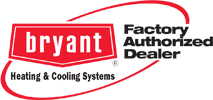A well-functioning furnace is essential for maintaining a comfortable and warm home environment, especially during the colder months. However, as furnaces age, their efficiency and reliability can decline, leading to increased energy costs and frequent maintenance headaches. Recognizing the signs that your furnace may need replacement is crucial for avoiding unexpected breakdowns and ensuring consistent heating.
There are several indicators that might suggest it’s time to consider a furnace replacement. From rising energy bills and erratic heating to frequent repairs and unusual noises, these are warning signs that the core system may be faltering. Additionally, considering the advancements in furnace technology, upgrading can offer significant benefits in terms of efficiency and comfort.
Understanding these signals can help you make an informed decision on whether it’s time to replace your furnace. By doing so, you can invest in a more efficient system that ensures long-term reliability and peace of mind for you and your family.
Recognizing Inefficient Operation
One of the first signs that a furnace may need replacement is noticeable declines in operational efficiency. Homeowners may observe a steady increase in their heating bills without a corresponding spike in energy consumption, indicating that the furnace is working harder to heat the home. This inefficiency often results from aging components that struggle to maintain optimal function, causing the furnace to consume more fuel or electricity to achieve the same heating output.
Inconsistent heating is another indicator of a furnace struggling with efficiency. Cold spots in certain rooms or fluctuating temperatures throughout the day suggest that the system is unable to maintain a consistent delivery of warm air. This issue can arise from outdated technology that fails to evenly distribute heat, making it difficult to maintain a comfortable environment.
These signs highlight an outdated furnace’s inefficiency. While maintenance and minor repairs can temporarily alleviate some issues, persistent inefficiencies suggest that a replacement is a more practical long-term solution. By choosing to replace an outdated furnace, homeowners can benefit from the improved efficiency of modern units, ultimately reducing energy consumption and enhancing home comfort.
Frequent Repairs and Increasing Costs
Frequent repairs are a clear sign that a furnace may be nearing the end of its lifecycle. Homeowners should pay attention to recurring problems such as frequent thermostat issues, ignition failures, pilot light complications, or blower motor malfunctions. While some repairs can be standard maintenance, consistent issues that require professional attention indicate that the furnace is no longer reliable.
When evaluating the need for a furnace replacement, it is critical to assess the cost of repeated repairs against the expense of a new unit. The cumulative costs of multiple repair services can quickly add up, overshadowing the investment required for a replacement. For instance, issues with heat exchangers and control boards often necessitate costly repairs, which can be economically burdensome if they occur repeatedly over time.
Therefore, conducting a cost-benefit analysis is essential. If repair expenses continue to rise with each incident, replacing the furnace can be a more cost-effective solution in the long run. A new furnace reduces repair costs and provides modern features, improving efficiency, reliability, and home heating comfort while minimizing unexpected expenses.
Age and Technological Advancements
The age of a furnace plays a crucial role in its efficiency and reliability. Furnaces typically have a lifespan of approximately 15-20 years, depending on usage and maintenance. Older furnaces often struggle to keep up with heating demands and develop frequent issues that affect their performance. As components wear out, the system becomes less effective at distributing heat, leading to uneven temperatures and higher energy consumption.
Modern furnaces offer significant advancements in technology that older models lack. Newer units boast improved energy efficiency, using less fuel to provide the same or better heating capabilities. Features such as variable-speed motors, two-stage heating, and zoned heating allow for more precise temperature control and reduced energy waste. Furthermore, modern furnaces come equipped with enhanced safety features, reducing the risk of hazardous malfunctions.
By upgrading to a modern furnace, homeowners gain access to improved heating performance and energy savings. These advancements can lead to not only reduced utility bills but also increased comfort levels within the home. This makes replacing an outdated furnace with a new model a worthy investment, particularly when considering the long-term financial benefits and improved safety.
Unusual Noises and Emissions
Unusual noises emanating from a furnace can signify underlying issues that may warrant replacement. Common sounds such as banging, rattling, or clanging can indicate problems with internal components like the blower motor or ductwork. These noises often mean parts are loose, misaligned, or malfunctioning, which can disrupt normal function and lead to significant repairs.
Emissions such as soot or carbon monoxide are more serious signs. A yellow or flickering pilot light, excessive soot buildup, or an increase in dry air can indicate problems. Carbon monoxide leaks are particularly dangerous, posing serious health risks to occupants. A defective heat exchanger often causes such issues, which can fail under pressure, allowing carbon monoxide to escape into the home.
Addressing these issues promptly is crucial for maintaining a safe living environment. When faced with unusual noises or worrying emissions, it is often wise to consider replacing the furnace to avoid health hazards and ensure reliable operation. Upgrading to a new unit can mitigate these risks and provide peace of mind.
Conclusion
Recognizing when a furnace needs replacement is vital for maintaining a safe and comfortable home. Understanding the signs of inefficiency, frequent repairs, advancing age, and the impact of unusual sounds or emissions can guide homeowners in making informed decisions. Upgrading to a modern furnace offers increased efficiency, improved safety, and long-term financial benefits.
If you notice these warning signs, consult our professionals at Stewart Heating Plumbing Air Conditioning about a furnace replacement in Pleasant Hill. Our technicians are ready to assess your current system and guide you toward the best solution for your heating needs. Investing in a new furnace can offer you peace of mind and ensure your home remains warm and secure.





